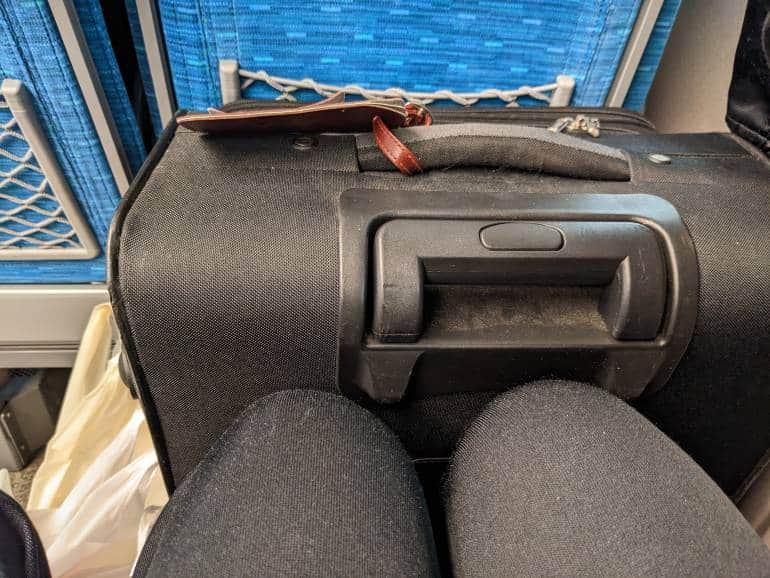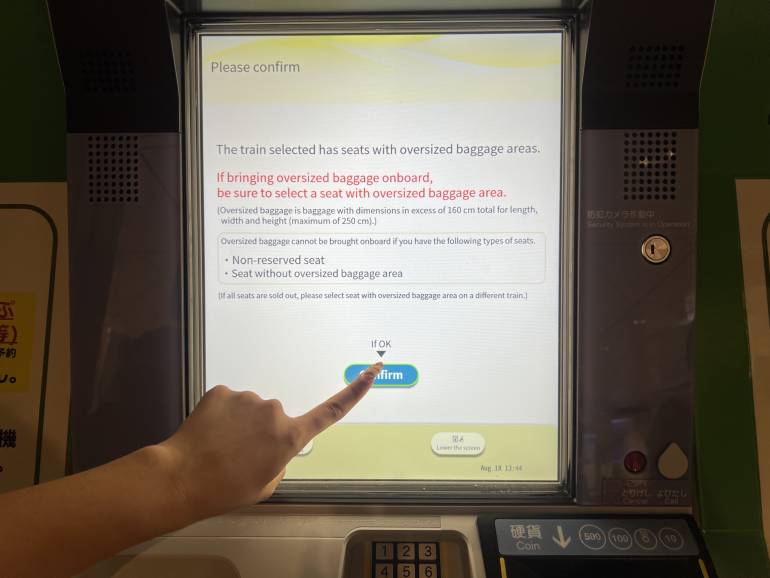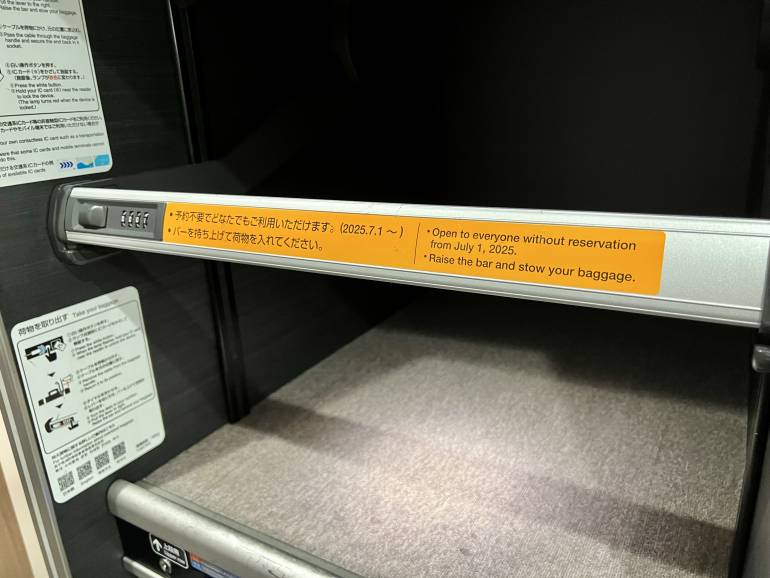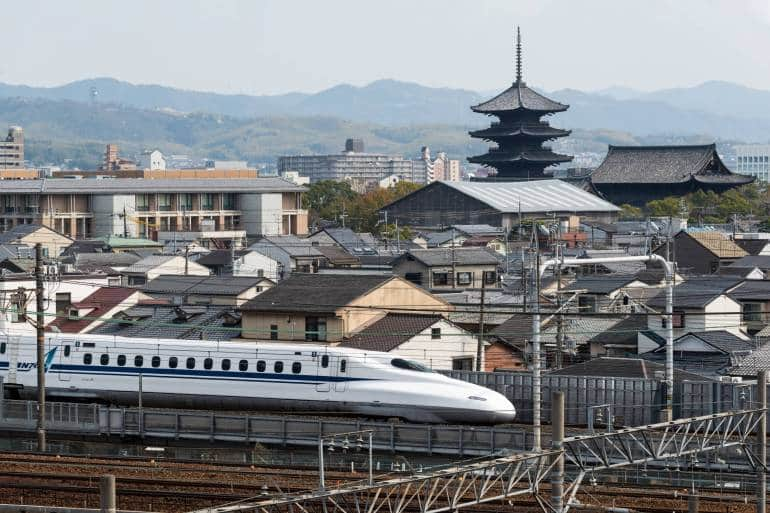14Views 0Comments

Shinkansen Luggage Rules in Japan: What To Know
Shinkansen luggage rules — causing confusion for travelers to Japan since 2020. But worry not, the bullet train is still one of the best ways to get around the country, so here’s what you need to know about bringing your bags on the Shinkansen.
Gone are the days of simply hopping on the bullet train worry-free with your suitcase in tow. Now, there are strict Shinkansen baggage rules dictating both luggage size and storage. What does this all mean? We’ve got the how, when, where, and why of the Shinkansen baggage policies and restrictions — so you can get some of that weight off your shoulders.
The basics: Shinkansen luggage rules in Japan
Once upon a time, getting on the Shinkansen with baggage was a fairly simple affair — you got on with your suitcase and stowed it wherever there was space. But in 2020, JR announced a policy requiring travelers with luggage of a certain size to reserve specific seats on certain Shinkansen routes. And things became complicated after that.
Challenge Sumo Wrestlers and Enjoy Lunch
Eat, train, and fight like a real Japanese sumo wrestler during this sumo demonstration and authentic ‘Chanko Nabe’ (hotpot) meal.
So now, on some Shinkansen lines, you’ll need to do extra planning before you bring your luggage on board. There are two things you’ll need to consider — the overall size of your suitcase, and where you want to store it. More on each of those below.

Which Shinkansen routes have baggage size rules?
The good news is that only four Shinkansen routes have strict luggage-size rules (at the moment, anyway). But the bad news is that these are pretty popular routes — especially the Tōkaidō Shinkansen, which is the one you take to travel between Tokyo and Kyoto or Osaka.
Restrictions on Shinkansen luggage size
If you have luggage with overall dimensions between 160–250 cm, you’ll need to reserve specific seats on the Shinkansen. Luggage of this size falls into a challenging category: it’s too big to safely store on the overhead luggage racks and also (usually) too big to squeeze in front of your knees.
Shinkansen luggage-size allowance
| Size | Reservation required |
|---|---|
| Up to 160 cm | No |
| 160–250 cm | Yes |
| 250 cm and above | Not allowed on train |
Luggage with a combined length, width and depth up to 160 cm — this is surprisingly big — doesn’t need a seat reservation. It can either be placed in front of you (goodbye, legroom) or in the overhead luggage rack, provided it doesn’t jut out in such a way that it could fall or be bumped. And it’s light enough for you to lift.

To put things in perspective, most American airlines also prefer your checked luggage to be under 160 cm (total combined dimensions). International flights from other areas tend to stretch the rules to 200 cm or so, though.
Enormous packages or suitcases over 250 cm won’t be allowed on the bullet train at all. However, this is unlikely to be a problem, as even the largest suitcases are typically under 200 cm in overall dimensions. But if you are the exception, take a look at our section on transporting luggage in Japan.
Editor’s note: If your suitcase is under 160 linear centimeters, you are expected to store it (safely) on the overhead rack or keep it with your person. Basically, JR is done with bags rolling through the aisles.
How to calculate Shinkansen baggage size

You will need to add the width, height, and depth of your suitcase together to come up with the overall dimensions. You can do this pretty easily with a tape measure. And there are baggage-sizers at all Tōkaidō Shinkansen stations, so you can always double-check before boarding. Note that the example dimensions are a max 50 cm (W) + 80 cm (H) + 30 cm (D).
Exceptions
Sports equipment (including skis, surfboards, and bikes — with covers), musical instruments, wheelchairs, and baby strollers do not need reservations, no matter the size. However, it is strongly recommended that you reserve an oversized luggage seat for a more comfortable journey. For Shinkansen lines without luggage space, you may want to book an extra seat if you can afford it — just in case.
Get travel and medical insurance with SafetyWing
For short trips, the Essential plan covers emergencies like evacuation, medical care, and delays. For expats or long-term travel, the Complete plan adds check-ups, mental health, maternity, and trip protection.
How to reserve seats with luggage space on the Shinkansen

Only certain types of seats come with extra luggage storage. These are the seats in the back row of the Shinkansen carriage — just note that the specific seat numbers for this row change depending on the type of Shinkansen you’re riding. The extra baggage storage space is directly behind the last row (unfortunately, you cannot recline these seats if you have baggage behind you).
You will need to reserve these seats before getting on the train, but they won’t cost you more than a regular reserved seat. And with a JR Pass, they are complimentary. If you don’t reserve before getting on the train, you’ll be charged ¥1,000 and staff will designate a spot for your oversized bag.

Pro tip: If there are no oversized-baggage seats available in the regular cars, consider booking some in a Green Car (it’s like Business Class). The Green Car is not always that much more expensive.
You can make seat reservations the same way you normally would — at a ticket office, a ticket vending machine, or online. Tickets are available for booking one month in advance. Note that you cannot use these seats if you bought a ticket for a non-reserved seat.
Sites and apps for booking Shinkansen tickets (with seat selection)
The Shinkansen luggage-storage compartment (updated)

Shibuya Official Street Go-Kart in Shibuya Annex – 55% off!
Enjoy a 1 Hour karting experience on the city roads of Tokyo, with up to 55% discount this month!
Feel like a celebrity as this course will take you through the famous Shibuya Crossing more than once.
As of July 2025, the oversize-baggage compartment on certain Tōkaidō Shinkansen and San’yō Shinkansen trains will be available to anyone with baggage smaller than 160 cm without the need for reservation. Typically you’d need to book specific seats to use these compartments. This is currently being offered on a trial basis — and it’s uncertain how long it will last for.
Important: If you have luggage with a combined size of more than 160 cm though, you’ll still need to reserve seats with oversized luggage space.
The dimensions available are 80 x 60 x 50 cm for the upper space, and 80 x 60 x 40 cm for the lower space. You can lock your things in place with an IC card — such as Suica or Pasmo.
Note: Only some cars on the Nozomi, Hikari, and Kodama Shinkansen 16-car services have baggage-storage compartments.
Luggage forwarding and storage services

What if all the spaces are booked up, or you just have too much luggage for one person to handle? Luckily, there are alternatives to loading everything onto a Shinkansen. One, you could send your luggage separately with a delivery service — we have a comprehensive guide to baggage-forwarding services. Two, there’s also the option of leaving it behind in a safe spot. For that, read our article on luggage storage in Tokyo.
Shinkansen baggage rules FAQs

Can I take large luggage on the Shinkansen?
You can take luggage on all Shinkansen routes. This goes for both reserved and non-reserved seats. However, if you are taking the Tōkaidō, San’yō, or Kyūshū, or Nishi Kyūshū Shinkansen, and the total dimensions of your luggage are 160-250 cm, you will need to reserve a seat with luggage storage. If your suitcase is more than 250 cm, you can’t bring it on the Shinkansen at all.
What size luggage is allowed on trains in Japan?
Baggage with total dimensions of over 250 cm can’t be taken on the Shinkansen. For local trains, there aren’t baggage-size restrictions, but at the same time, there aren’t baggage-storage spaces either. We recommend using a luggage-forwarding service if you have large suitcases and plan to travel on local trains.
How heavy can my bag be?
You may only take two items of luggage onto any Shinkansen, and although the rules focus more on size, a general rule is that they should not exceed 30 kg in weight each.
Can I reserve the special seats even if I don’t have oversized luggage?
Yes, but it is recommended that you be a team player and sit in a normal seat if you don’t have oversized luggage.
What if all the oversized-luggage seats are fully booked?
You can see if any luggage space is available in the Green Car, which is a bit more expensive (it’s like Business Class). Otherwise, you’re stuck with your bag in front of you, or you’ll have to book a different train.
What if I forget to book?
You will either be charged a ¥1,000 fee and the guard will put your luggage in a designated space (if available), or you might be asked to take a different train if you haven’t boarded yet.
Can I change my normal Shinkansen ticket to an oversized-luggage seat ticket?
Yes, if there are still oversize luggage seats available, you can head to the Shinkansen ticket counter and ask to change your seat.
Do I need to buy an oversize-luggage seat for my baby stroller or ski gear?
No, items like prams, sports gear, and musical instruments don’t count as oversized luggage.
Can I use the Shinkansen oversized luggage compartment without a reservation?
At the time of publishing, Shinkansen services with oversize-luggage compartments are trialing a no-reservation-required system. Keep in mind, though, that these areas are currently only for luggage up to 160 cm total, not for oversize luggage — you’ll still need to reserve an oversized-luggage seat for that.
What if I want to take the Kodama (unreserved) Shinkansen service?
There are limited oversized-baggage seats on Kodama trains because they go slower and are predominantly used by commuters. There may only be one car for reserved seating, or even none in some cases, so check when booking.
While we do our best to ensure it’s correct, information is subject to change. Post first published in August 2022. Last updated: August, 2025 by Patrick Balfe.
閱讀繁體中文版本:
日本新幹線最新的行李規定指南



